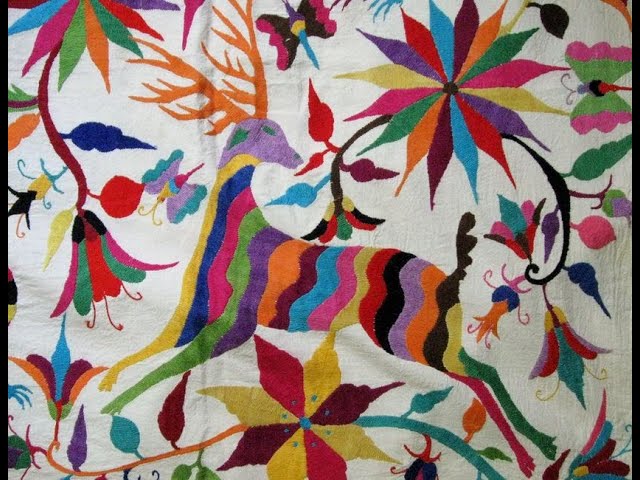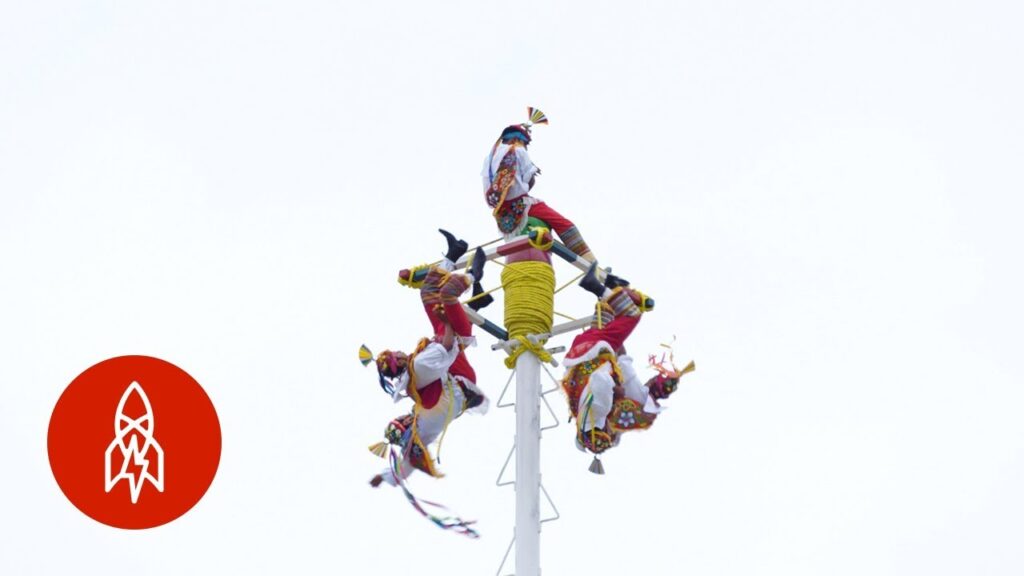«`html
Unveiling the Mysteries of Mexican Legends
Mexico’s rich cultural tapestry is woven with vibrant legends that have been passed down through generations, each adding a splash of mystery and excitement to the nation’s history. These myths and stories often feature supernatural elements and profound moral lessons, reflecting the complex fusion of indigenous beliefs and Spanish influences. Delving into these legends allows us to understand the deep reverence of the mystical in Mexican culture and how it continues to influence the daily lives of its people.
La Llorona, or ‘The Weeping Woman’, is one of the most iconic Mexican legends. This sorrowful tale speaks of a woman who is said to wander near rivers or bodies of water, mourning her drowned children. As the legend goes, hearing her haunting cries is an omen of misfortune. While terrifying, this legend also encompasses themes of love, tragedy, and the consequences of one’s actions, captivating the imaginations of both locals and visitors who dare to explore the more spectral aspects of Mexico’s heritage.
The legendary Chupacabra, or ‘Goat-Sucker’, is another enigma that takes root in rural folklore. Allegedly responsible for the mysterious deaths of livestock, this creature is often described as a reptilian beast with spiky back and fearsome eyes. Whether the Chupacabra is a result of mass hysteria or a yet to be discovered species, it has certainly secured its place in the realm of the unexplained, drawing intrigued adventurers and cryptozoologists to the remote areas of Mexico in hopes of uncovering the truth behind this chilling legend.
«`
The Roots of Mexican Oral Traditions
Mexico’s rich tapestry of culture and history is vividly captured and conveyed through its oral traditions. These traditions, deeply rooted in the pre-Hispanic era, carry the essence of indigenous life, mythology, and wisdom. They have been passed down through generations, serving to connect the present with a storied past. The tales told by the ancient Aztecs, Mayas, and other indigenous groups continue to echo in the stories, myths, and legends narrated today.
Oral storytelling in Mexico often centers around universal themes such as the importance of nature, the struggles between good and evil, and the virtues of courage and compassion. Yet, it is the local flavor and regional variations that infuse these stories with a unique Mexican identity. Whether it’s the legend of the Popocatepetl and Iztaccihuatl volcanoes expressing eternal love or the tales of La Llorona haunting rivers and streams, these narratives form an integral part of the Mexican cultural landscape.
The ritual of imparting these stories is also a testament to the community’s value placed on oral tradition. In rural areas, it’s common for families and villages to gather while elders recount tales of spirits, deities, and ancestral heroes under the starlit sky. This communal aspect upholds the oral traditions not just as a form of entertainment, but as a living cultural practice that continues to instruct and bind communities together. The Day of the Dead celebrations, replete with stories of the afterlife, serve as a prime example of how oral traditions are intertwined with Mexican social and spiritual customs.
The persistence of these traditions in modern times is aided by the role of ‘curanderos’ (healers) and ‘abuelos’ (grandparents), who are often seen as the custodians of these tales. The stories imparted by them also incorporate teachings on herbal medicine, cosmic events, and traditional life skills, underlining how oral traditions have been indispensable in the preservation and dissemination of indigenous knowledge and practices.
This incredible endurance of Mexican oral traditions, despite the sweeping forces of globalization and digital media, reflects a society that holds storytelling in high regard. Modern-day festivals, such as the Zacatecas International Storytelling Festival, are just one of the many ways these narratives continue to find eager audiences, ensuring that the roots of Mexican oral history remain not just a memory to be recalled, but a living voice to be celebrated and further nurtured.
Exploring Pre-Columbian Mythology in Mexican Legends
Mexico is a country rich with ancient history and enduring myths that have been passed down through generations. The pre-Columbian civilization that once thrived here left behind a treasure trove of mythical tales that continue to fascinate and inspire visitors from all over the world. These myths offer a glimpse into the values, beliefs, and cosmology of the indigenous peoples of Mexico, long before the arrival of Europeans.
Among the most captivating are the legends of the Maya and the Aztecs, two of the most dominant pre-Columbian civilizations whose mythology is intricately woven with the fabric of Mexican culture. The Popol Vuh, often referred to as the Maya Bible, for instance, recounts the creation myth of the K’iche’ Maya, and is an invaluable source of understanding the worldview of the ancient Maya. Similarly, the Aztec pantheon is filled with deities such as Quetzalcoatl, the feathered serpent, and Tezcatlipoca, the god of night and sorcery, both central to Aztec mythology and recurring figures in contemporary Mexican folklore.
These pre-Columbian legends not only consisted of gods and creation stories but also heroic epics and moral tales that served to educate and guide the populace. Oral traditions were strong, and the act of storytelling was an important ritual, with elders passing down tales to the younger generation. This form of knowledge transfer ensured the survival of myths despite the absence of widespread literacy, and many of these narratives endure in the oral traditions that exist to this day.
Furthermore, many festivals and ceremonies in modern Mexico can be traced back to pre-Columbian mythologies, which continue to play a significant role in them. Dance performances and dramatic reenactments often depict scenes from these ancient tales, keeping the mythology alive. This enduring legacy is a testament to the deep respect and reverence the people of Mexico have for their ancestral traditions and lore.
The Role of Folk Tales in Mexico’s Cultural Heritage
Folk tales are an integral part of Mexico’s rich cultural tapestry, embodying the values, beliefs, and historical narratives that have shaped Mexican society over centuries. From the sun-soaked coasts to the rugged highlands, each region boasts its own treasury of stories passed down through generations. These narratives serve not only as a means of entertainment but also as a vehicle for imparting moral lessons and preserving the collective memory of the nation.
In these folk tales, mythical creatures and legendary heroes leap from the page, taking readers on a journey through Mexico’s diverse landscapes and epochs. Characters like La Llorona, the weeping woman said to roam rivers and lakes in search of her children, or El Chupacabra, the notorious livestock-predator, are not merely urban legends, but also reveal the depths of Mexico’s collective psyche and the complexities of its societal fears and aspirations.
The endurance of these tales in contemporary Mexican culture highlights their resonance with the modern Mexican identity. They are passed down from parents to children through oral tradition, often accompanied by vibrant festivals, music, and dance that bring the stories to life. But they also find their way into formal education, where they serve as tools for teaching language, history, and ethics. As such, folk tales are much more than simple stories; they are the living, breathing soul of Mexican heritage, painting a picture of a land steeped in tradition and brimming with imagination.
Legendary Figures and Heroes in Mexican Lore
Mexico’s lore is a tapestry rich with legendary figures and heroes whose stories have been passed down through generations. From the tales of brave revolutionaries to the myths of ancient gods, these narratives are an integral part of the country’s cultural heritage. Among these legends, the figure of Miguel Hidalgo y Costilla, the priest who led the battle for independence against Spanish rule, stands tall. His famous «Grito de Dolores» is considered the cry that sparked the Mexican War of Independence and his legacy continues to inspire Mexicans to this day.
Equally enshrined in Mexican history is the story of the Niños Héroes, six teenage military cadets who defended the Chapultepec Castle during the Mexican-American War. Their bravery, especially that of Juan Escutia who legend says wrapped himself in the Mexican flag and leapt to his death rather than be captured, is commemorated on September 13th every year. They remind all of the valor and youthful audacity that has characterized Mexican heroes throughout history.
Moreover, in the pantheon of mythical figures, few loom as large as the feathered serpent deity, Quetzalcoatl. A core figure in pre-Hispanic times who was worshipped by various Mesoamerican cultures, including the Aztecs and Toltecs, Quetzalcoatl was associated with wisdom, life, and the wind. His legend signifies not just the rich spiritual beliefs of ancient Mexico but also portrays the complexity of Mesoamerican cosmology, which continues to capture the imagination of people around the world.
Preserving the Storytelling of Mexico’s Ancient Civilizations
Mexico’s rich tapestry of history is interwoven with the fascinating stories of its ancient civilizations, including the Aztecs, Maya, and Olmecs, among others. These complex societies have left a significant mark on the country’s cultural heritage. Their astonishing achievements in astronomy, mathematics, art, and architecture continue to inspire and intrigue researchers and travelers alike. To preserve these stories for future generations, it is crucial to maintain the integrity of both the physical remnants of these civilizations and the intangible narratives that have been passed down through the centuries.
Storytelling has always played a vital role in the conservation of Mexico’s ancient history. Oral traditions, once the primary means of preserving cultural knowledge, are still alive in many Mexican communities. Elders recount myths and legends that offer insights into the beliefs and values of their ancestors. This form of storytelling is not only a repository of historical knowledge but also a living practice that strengthens community bonds and continues to imbue the present with the wisdom of the past.
Documenting these oral stories has become an important endeavor. Anthropologists, linguists, and historians collaborate with local storytellers to record and translate these precious narratives. Digital media and modern archiving techniques now play a critical role in ensuring these tales are not lost to time. By capturing the stories in written and audiovisual formats, they become accessible to a wider audience, furthering understanding and appreciation of Mexico’s ancient cultures on a global scale.
Moreover, museums and educational institutions are at the forefront of this preservation effort. These organizations curate exhibits and develop programs that delve into the heart of ancient Mexican storytelling. Interactive experiences, such as reconstructed scenes from history or virtual reality tours of ancient ruins, bring these tales to life in memorable and impactful ways. Through such engaging platforms, the voices of Mexico’s ancient civilizations can continue to resonate and foster a deeper connection with the past amidst the modern world.



